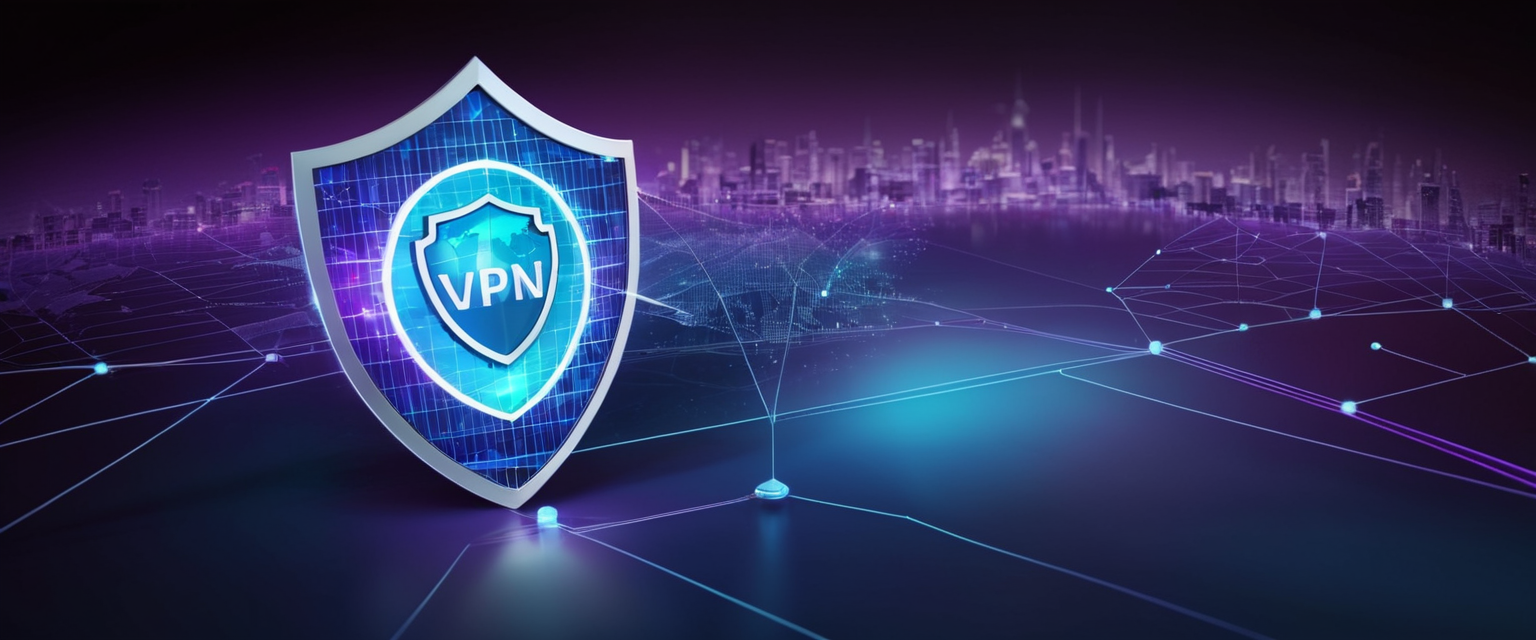
This comprehensive report examines Virtual Private Networks (VPNs) through multiple dimensions, exploring their fundamental definition, technical architecture, functionality, security implications, and evolving role in modern digital communication. The analysis reveals that a VPN represents far more than a simple privacy tool—it has evolved into a critical infrastructure component for both personal users and enterprises seeking to secure data transmission across public networks. VPNs function by creating encrypted tunnels that obscure user identity and protect data from unauthorized interception, yet they come with significant limitations, regulatory challenges, and security considerations that users must understand. Today, approximately 1.7 to 1.8 billion people worldwide use VPNs, representing roughly one-third of all internet users, though adoption varies dramatically across regions and continues to shape how organizations approach remote work, data protection, and regulatory compliance.
Understanding VPN Fundamentals and Definition
A Virtual Private Network (VPN) stands as one of the most consequential yet frequently misunderstood technologies in contemporary digital security infrastructure. At its core, a VPN establishes a digital connection between a user’s device and a remote server owned by a VPN provider, creating what is effectively a point-to-point encrypted tunnel through which all personal data, browsing activity, and network communications travel. This fundamental architecture addresses a critical vulnerability in standard internet communications—the inherent insecurity of public networks and the visibility of user activity to Internet Service Providers, network administrators, and potentially malicious actors seeking to intercept sensitive information.
The terminology itself reveals the technology’s essential characteristics. The “virtual” component reflects that no physical cables physically connect the user’s device to the VPN server; instead, the connection exists as a software-based tunnel operating across the existing internet infrastructure. The “private” designation indicates that data transmitted through this tunnel remains inaccessible to unauthorized observers, protected through encryption that renders information unreadable without the appropriate decryption key. The “network” aspect emphasizes that multiple devices—specifically the user’s computer, tablet, or smartphone and the VPN server—work in coordinated fashion to establish and maintain a secure communication link. When combined, these three elements create technology that fundamentally transforms the internet experience by providing what feels like a private connection even when operating across public infrastructure.
The evolution of VPN technology demonstrates its growing importance in the digital landscape. VPNs originated in the mid-1990s when Microsoft developed the first VPN protocols specifically to enable secure communication within their internal corporate network. OpenVPN, released in 2001 as an open-source solution, became one of the first widely adopted VPN technologies and gained popularity due to its strong encryption capabilities and ability to circumvent firewalls. This early adoption established VPNs as essential tools for enterprise security. However, the technology’s trajectory has transformed it from a niche corporate solution into a mainstream utility accessed by hundreds of millions of individuals seeking to reclaim control over their digital privacy and freedom in an increasingly monitored and restricted internet environment.
Technical Architecture and Operational Mechanisms
Understanding how a VPN functions requires examining the sophisticated technical processes occurring invisibly when a user connects through VPN software. The operational sequence begins when a user activates a VPN application on their device, initiating a connection request to a VPN server operated by the provider. When this connection attempt is made, the server authenticates the user by verifying login credentials and establishing identity verification protocols. Once authentication succeeds, the server creates an encrypted tunnel—a secure communication channel through which all subsequent user traffic flows.
The encryption process represents the cornerstone of VPN security and represents where much of the actual protection occurs. Before any data leaves the user’s device to travel across the internet, the VPN client encrypts it using sophisticated algorithms that transform readable information into scrambled code that appears meaningless to any unauthorized observer. The encryption algorithms transform user data into ciphertext—a format that can only be deciphered by someone possessing the appropriate decryption key, which typically uses standards such as \(AES\) (Advanced Encryption Standard) with either 128-bit or 256-bit keys. These encryption levels are considered highly secure and represent the gold standard across the VPN industry and broader cybersecurity applications.
Once encrypted, the user’s data packets travel through the VPN tunnel to the remote VPN server. The VPN server then uses its private key to decrypt this data, transforming it back into readable format. Once decrypted, the server forwards the user’s request to its intended destination—whether that be a website, cloud service, or other internet resource. To the destination website or service, the traffic appears to originate from the VPN server’s IP address rather than the user’s actual device IP address, effectively masking the user’s true location and identity.
This architectural approach creates a crucial distinction between what the VPN hides and what it does not. The VPN successfully obscures the user’s IP address, real location, and browsing activity from ISPs, network administrators, and websites. It encrypts the contents of communications, preventing eavesdropping even on public wireless networks. However, important limitations exist to what VPN technology can accomplish. If a user logs into personal accounts like Google, Facebook, or banking platforms while connected to a VPN, those platforms can still track activity because the user has voluntarily identified themselves through account authentication. Cookies and tracking technologies operate independently of VPN protection and can follow users across websites. Payment processors and financial institutions can link transactions back to individual users through banking relationships that exist outside VPN scope. Furthermore, sophisticated digital fingerprinting techniques can identify users based on unique device characteristics like screen resolution, browser settings, and installed fonts.
VPN Protocol Landscape and Implementation
The selection of VPN protocol—the specific set of rules and technical standards governing how data is transmitted and encrypted—substantially impacts both security levels and user experience. Different protocols offer distinct balances between security strength, connection speed, and compatibility with various devices and operating systems.
OpenVPN represents the most widely recommended and implemented protocol across commercial VPN providers. As an open-source protocol, OpenVPN’s underlying code is publicly available for inspection by security researchers, enabling continuous vulnerability testing and substantiation of security claims. OpenVPN utilizes TLS encryption protocols and the OpenSSL library to establish secure connections, employing dual-layer encryption consisting of data channel encryption and control channel encryption. The data channel protects the actual user information being transmitted, while the control channel secures the connection between the user’s device and the VPN server. OpenVPN operates across both UDP (User Datagram Protocol) and TCP (Transmission Control Protocol) ports, offering flexibility in deployment scenarios. Because it commonly uses TCP port 443—the standard port for HTTPS web traffic—OpenVPN proves difficult for network administrators to block or detect, making it particularly valuable for users in highly censored environments.
Internet Protocol Security (IPsec) provides another widely implemented protocol, particularly in enterprise environments. IPsec authenticates and encrypts all IP packet transfers between communicating parties, operating in two primary modes: Transport mode, which encrypts only the message content within data packets, and Tunnel mode, which encrypts entire data packets. IPsec’s high security and versatility across different network layer protocols make it attractive for organizations, though configuration complexity and key management requirements can present challenges.
The Secure Socket Tunneling Protocol (SSTP) was specifically developed by Microsoft to provide encrypted connections over networks that might otherwise block standard VPN protocols. By channeling VPN traffic through the SSL 3.0 channel and operating over HTTPS port 443, SSTP benefits from integrated encryption and connection integrity features. This approach allows it to bypass most firewalls and network restrictions, making SSTP particularly useful in restrictive environments though its proprietary nature and Windows-primary focus limit broader adoption.
Layer 2 Tunneling Protocol combined with IPsec (L2TP/IPsec) represents a moderate security option, combining tunneling functionality with encryption protocols. While more secure than older PPTP protocols, L2TP/IPsec presents platform compatibility limitations and slower data transfer speeds compared to more modern alternatives.
WireGuard and IKEv2/IPsec represent newer protocol developments, with WireGuard gaining rapid adoption due to its modern cryptographic practices and simplified code base. IKEv2/IPsec offers mobile-friendly attributes, particularly its ability to maintain connections when switching between WiFi and cellular networks.
The outdated PPTP (Point-to-Point Tunneling Protocol) protocol still appears in legacy systems but should be avoided in new implementations due to numerous known security vulnerabilities and widely acknowledged compromises. Organizations requiring secure VPN deployment should prioritize newer, well-maintained protocols with proven security records rather than relying on deprecated technologies.

Diverse VPN Architecture and Classification Systems
VPN technology supports multiple distinct architectural models, each addressing different use cases and operational requirements. Understanding these differences proves essential for selecting appropriate solutions for specific security and access needs.
Remote Access VPNs represent the most widely recognized configuration, enabling individual users to securely connect to private networks from remote locations using standard public internet connections. This architecture powers modern remote work, allowing employees to access office files, applications, and internal resources as if physically present at corporate headquarters while maintaining security even when connecting from cafes, airports, or home networks. Remote Access VPNs operate on a host-to-network model where each individual device establishes its own tunnel to the network it wishes to access. This approach became particularly critical during the COVID-19 pandemic, when rapid shifts to remote work necessitated secure mechanisms for accessing sensitive company data from unsecured home networks and public wireless hotspots.
Site-to-Site VPNs follow a fundamentally different architectural approach, establishing secure connections between entire networks rather than individual devices. Organizations with branch offices in different geographic locations use site-to-site VPNs to securely connect their various network locations, enabling seamless communication and data sharing across dispersed infrastructure. This configuration operates as network-to-network architecture where dedicated gateway equipment at each location manages the VPN tunnel, making the connection transparent to all devices within those networks. Intranet-based site-to-site VPNs connect multiple sites belonging to the same organization, while extranet-based configurations join sites belonging to different organizations for collaborative purposes.
Mobile VPNs address specific challenges inherent to smartphone and tablet computing environments, maintaining stable connections while users transition between different network types—such as switching from WiFi to cellular data connectivity without interrupting VPN sessions or losing active applications. This capability proves essential for field workers, sales representatives, and mobile users requiring continuous secure access to corporate resources while moving between locations.
DMVPN (Dynamic Multipoint Virtual Private Network) technology enables dynamic mesh VPN networks without requiring static preconfiguration of all potential connection endpoints. This approach initially establishes a hub-and-spoke network topology, then dynamically builds spoke-to-spoke tunnels on demand, significantly reducing network load on hub devices and improving overall network efficiency.
Provider-provisioned VPNs represent another category where the VPN service provider isolates segments of their own network infrastructure into virtual segments, maintaining privacy between different segments while sharing underlying infrastructure. This approach differs fundamentally from user-provisioned or enterprise-managed VPNs, as the service provider maintains complete control over security and operational parameters.
Primary Benefits and Use Case Applications
VPN technology delivers multiple distinct benefits that drive adoption across diverse user populations and organizational contexts.
Privacy Protection ranks among the most fundamental and widely cited benefits, as VPNs effectively hide users’ IP addresses and mask browsing habits from multiple potential observers. Without VPN protection, Internet Service Providers possess complete visibility into user browsing patterns and can track which websites users visit, what files they download, and what online services they access. This information becomes particularly sensitive as ISPs in certain jurisdictions face legal requirements to maintain browsing logs and provide them to government agencies without warrant requirements. By encrypting user traffic before it passes through ISP infrastructure, VPNs render ISPs unable to see content or determine which specific websites users visit, though sophisticated operators may still observe that encrypted VPN traffic exists.
Enhanced Security on Public Networks provides critical protection for users accessing the internet through untrusted wireless connections. Public WiFi networks in coffee shops, airports, hotels, and other establishments present significant security risks because other users on those networks can potentially intercept unencrypted data transmissions. Attackers positioned on public networks can employ packet sniffing techniques to capture usernames, passwords, credit card numbers, and other sensitive information traversing these networks without encryption. VPNs encrypt all data before it traverses public networks, preventing even sophisticated attackers from reading intercepted traffic regardless of network conditions.
Circumventing Geographic Content Restrictions enables users to access region-blocked content and services. Many entertainment streaming platforms, news websites, and online services restrict content availability based on user geography, implementing this through IP address detection. By routing traffic through VPN servers located in different countries, users can appear to access the internet from those locations, thereby accessing content ostensibly restricted to those regions. While this capability supports legitimate use cases like travelers accessing home-country streaming services while abroad, or users in censored nations accessing blocked content, it also enables circumvention of content licensing agreements and regional restrictions that publishers implement for legitimate business reasons.
Avoiding Bandwidth Throttling and Data Throttling represents a specific benefit for users whose ISPs intentionally slow connection speeds under certain circumstances. Some ISPs deliberately throttle connections when users stream high-definition video, engage in peer-to-peer file sharing, or consume excessive bandwidth according to ISP definitions. By encrypting traffic so ISPs cannot determine what activities users engage in, VPNs prevent targeted throttling based on specific activities, though ISPs might still implement blanket traffic prioritization based on overall usage levels.
Cost Savings Through Dynamic Pricing Avoidance provides an ancillary benefit discovered through user practice rather than advertised by VPN providers. Online retailers, airlines, and hotel booking services sometimes utilize IP address geolocation to adjust pricing based on perceived user location, offering different prices to users in different geographic regions or with different browsing histories. By connecting through VPN servers in different locations and managing their browsing history more carefully, users can potentially identify and access lower pricing not available to users in their actual locations.
Secure Remote Work and Corporate Network Access has become increasingly central to VPN adoption, particularly following the pandemic-driven shift toward remote work arrangements. Organizations require confidence that employees accessing sensitive company data, client information, and proprietary systems from unsecured home networks or while traveling maintain appropriate security protections. VPNs establish encrypted tunnels through which all corporate data travels, preventing interception even when transmitted across public networks or unsecured wireless connections. This capability enables organizations to maintain productivity advantages of remote work while implementing the security controls their data protection obligations require.
Critical Limitations, Risks, and Security Concerns
Despite substantial benefits, VPN technology carries significant limitations and introduces security risks that users must understand and account for when implementing VPN solutions.
Connection Speed Reduction represents one of the most immediately apparent limitations. The encryption process and rerouting of traffic through remote servers necessarily introduce latency and bandwidth overhead. Data must travel a longer physical distance to reach VPN servers before traveling to destination websites, increasing travel time particularly for distant server connections. The encryption and decryption processes themselves consume processing resources on both the user’s device and the VPN server, potentially slowing performance on older hardware or during periods of high server load. While modern VPN providers have substantially improved speed performance, connection speed typically remains marginally slower than direct connections without VPN protection.
VPN Blocking and Detection represents an escalating adversarial challenge as websites and platforms increasingly recognize and block VPN traffic. Streaming platforms like Netflix have deployed sophisticated geolocation verification systems that detect VPN usage and deny access to users connecting through identified VPN servers. Financial institutions sometimes block transactions initiated from known VPN IP addresses as a fraud prevention measure. Some websites maintain databases of known VPN IP addresses and prevent access from those addresses entirely. This cat-and-mouse game continually evolves as VPN providers develop obfuscation techniques and other anti-detection measures, while platforms develop countermeasures to identify and block these evasion techniques.
False Sense of Security presents perhaps the most insidious risk, as users often overestimate VPN protection capabilities and underestimate remaining vulnerabilities. While VPNs effectively hide IP addresses and encrypt data in transit, they provide no protection against malware, phishing attacks, or malicious websites that users intentionally visit. VPN protection operates at the network layer but cannot prevent users from compromising their own security through unsafe behavioral choices like downloading malware, clicking malicious links, or reusing weak passwords. Users depending exclusively on VPNs without implementing complementary security practices like antivirus software, password managers, and careful browsing habits retain substantial vulnerability to cyber threats.
Logging Policies and Data Privacy Concerns present critical differentiation between reputable VPN providers and less trustworthy alternatives. The theoretical advantage of VPN use assumes that VPN providers do not monitor, track, or log user activity—yet many VPN services maintain extensive logs of user behavior. When VPN providers log IP addresses, connection times, websites visited, bandwidth usage, and other metadata, they essentially replicate the surveillance capabilities that ISPs possessed before VPN adoption. If law enforcement obtains access to VPN provider logs through legal process, warrant, or cooperation agreements, previously hidden user activity becomes discoverable. This risk proved particularly acute during the COVID-19 pandemic when numerous free VPN services were discovered selling user data to advertisers, operating botnets leveraging user bandwidth, or injecting malware into user devices.
DNS Leaks represent a specific technical vulnerability where VPN clients fail to route DNS (Domain Name System) requests through encrypted tunnels, instead allowing these queries to pass through the user’s default ISP-provided DNS server. DNS queries reveal which websites a user attempts to access, even when the actual website traffic travels through the VPN tunnel. An improperly configured VPN that suffers DNS leaks effectively exposes the user’s browsing activity to the ISP or other network observers despite successfully encrypting the actual website data. Regular testing for DNS leaks using online testing tools proves essential to confirm VPN functionality remains complete.
IPv6 Leaks and WebRTC Vulnerabilities represent similarly subtle technical vulnerabilities where user traffic or identifying information may leak through alternative network protocols not properly handled by VPN software. WebRTC (Web Real-Time Communication), a browser feature enabling real-time video and audio communication, can inadvertently leak user IP addresses even when connected to a VPN because direct peer-to-peer communication sometimes requires revealing IP addresses. Modern VPN implementations have largely addressed these vulnerabilities, but periodic testing remains prudent to confirm protection remains complete.
Free VPN Services as Security Liabilities present acute risks despite their apparent cost advantage. Free VPN providers must generate revenue through alternative mechanisms since users pay no subscription fees, and examination of free VPN operations reveals deeply concerning practices. Many free VPN services explicitly log and sell user browsing data to advertisers and data brokers, directly contradicting claims of privacy protection. Free VPNs frequently deploy malware, spyware, and other malicious code directly into user devices, converting devices into botnets or harvesting credentials and personal information. Even ostensibly legitimate free VPN services typically impose severe data caps, severely throttle connection speeds, populate interfaces with excessive advertising, and maintain server networks too small to handle aggregate user demand, resulting in performance degradation. Security analysis consistently demonstrates that users employing free VPNs often experience less security than users with no VPN at all, as the risks introduced by malicious VPN providers exceed protection the VPN theoretically provides.
Man-in-the-Middle Attacks remain theoretically possible if attackers compromise VPN infrastructure or intercept communications during VPN connection establishment. A sophisticated attacker positioned between a user and the VPN server might intercept initial handshake communications, install malicious certificates, or manipulate encrypted traffic if encryption implementation contains vulnerabilities. Organizations and users should therefore prioritize VPN providers with demonstrated commitment to security, transparent infrastructure, and regular third-party security audits confirming proper implementation.

Testing and Verification of VPN Functionality
Users and organizations cannot assume that simply connecting to a VPN service guarantees complete protection—actual functionality must be regularly tested and verified through systematic procedures.
DNS Leak Testing represents the most fundamental verification procedure and should occur regularly whenever connection settings change. DNS leak testing involves first disconnecting from the VPN and visiting a DNS leak test website to identify the user’s actual DNS servers provided by their ISP. Following connection to the VPN, users revisit the DNS testing website and confirm that displayed DNS servers have changed to the VPN provider’s servers rather than their ISP’s servers. If displayed DNS servers remain unchanged after VPN connection, a DNS leak exists indicating that DNS requests are not passing through the VPN tunnel and exposing browsing activity. Websites like DNSLeakTest.com and Surfshark’s DNS leak testing provide simple interfaces for conducting these tests.
IP Address Leak Testing verifies that the VPN successfully masks the user’s actual IP address with the VPN server’s IP address. Users disconnect from the VPN and note their real IP address using services like Surfshark’s IP checker or ExpressVPN’s IP checking tool. After connecting to a VPN server in a specific country, users revisit the IP checking service and verify that the displayed IP address, location, and ISP information all correspond to the VPN server’s location rather than the user’s actual location. Discrepancies between expected and displayed location information indicate IP leaks where the user’s true IP address remains visible despite VPN connection.
WebRTC Leak Testing specifically examines whether WebRTC technology inadvertently leaks user IP addresses despite VPN protection. ExpressVPN provides a WebRTC leak testing tool that displays user IP addresses as seen through WebRTC connections while the VPN is active. If this tool displays the user’s actual IP address rather than the VPN server’s address, a WebRTC leak exists indicating incomplete VPN protection for certain communication types.
Global VPN Adoption, Market Trends, and Usage Statistics
Examination of global VPN adoption patterns reveals dramatic growth alongside substantial regional variation driven by distinct privacy concerns, censorship levels, and regulatory environments.
As of 2025, approximately 1.7 to 1.8 billion people worldwide utilize VPN services, representing roughly one-third of all internet users globally. This represents substantial growth from earlier years when VPN usage remained concentrated among technical professionals and privacy-conscious individuals, indicating mainstream acceptance of VPN technology as an essential digital security tool. However, significant geographic concentration exists, with adoption rates varying dramatically across different countries and regions.
The United States presents a complex adoption picture, with surveys indicating that approximately 32 percent of American adults currently use VPNs as of 2025, representing a substantial decline from 46 percent reported in 2023. This unexpected decline diverges from typical technology adoption curves and suggests shifting attitudes toward VPN necessity among American users, potentially reflecting growing recognition of VPN limitations, satisfaction with streaming services that work around VPN blocks, or complacency regarding privacy concerns.
However, other regions demonstrate far higher adoption rates driven by specific national circumstances. Indonesia leads the world in VPN adoption rates at approximately 55 percent of internet users, followed by India at roughly 43 percent, and several Middle Eastern and Asian countries at 36-38 percent adoption rates. The United Arab Emirates shows adoption rates around 65.78 percent on average from 2020-2025, while Qatar demonstrates approximately 55.43 percent average adoption. These exceptionally high adoption rates typically correlate with restrictive internet environments where governments block foreign news sources, social media platforms, streaming services, and other content that citizens desire to access. VPN usage in these regions predominantly serves circumvention of governmental censorship rather than privacy enhancement.
In absolute numbers, India and China contain the world’s largest VPN user populations at approximately 403 million and 319 million users respectively. However, this reflects their massive internet user populations rather than particularly high adoption percentages, as even modest adoption rates within billion-person nations produce enormous absolute user counts.
The VPN market demonstrates robust financial growth trajectory, with market size estimates placing the global VPN services market at approximately $52 billion in 2024, with projections suggesting growth to roughly $137-170 billion by 2030-2033 at approximately 13-17 percent compound annual growth rates. This sustained growth reflects both increasing consumer demand for privacy tools and expanding enterprise adoption of VPN solutions for secure remote access and cloud-based operations.
Legal Status, Regulatory Framework, and Government Restrictions
VPN legal status varies dramatically across different countries and jurisdictions, with some nations fully embracing VPN technology while others heavily restrict or completely ban VPN usage.
Fully Legal Jurisdictions include most Western democracies where VPN use remains entirely legal without restriction. The United States, Canada, United Kingdom, Australia, and most European nations permit individual VPN usage without legal prohibition. In these jurisdictions, VPNs operate as legitimate tools for privacy protection and security, with no criminal penalties for VPN installation or usage.
Restrictive Jurisdictions with Heavy Regulation implement government-approved VPN systems and ban unapproved commercial VPN services. China permits only government-approved VPNs that remain under state surveillance and control, effectively rendering VPN protection meaningless for privacy purposes as the government retains complete visibility into encrypted communications. Similarly, Iran restricts VPN usage to government-approved services while criminalizing unapproved VPN use, with penalties reaching up to one year of imprisonment. Pakistan requires government registration of all VPN services and mandates that VPN companies share user data with Pakistani authorities, defeating the fundamental privacy purpose of VPN technology.
Jurisdictions with Complete VPN Bans represent the most restrictive regulatory environments. North Korea completely prohibits VPN usage as part of its comprehensive internet control regime, though enforcement against general populations remains limited since most citizens lack internet access entirely. Turkmenistan banned VPNs in 2015, employing its state-run ISP (Turkmenet) to actively detect and block VPN connections, with punishment including unspecified fines. Belarus banned VPNs in 2015 and also blocked Tor network access in 2016, with penalties for violations including unspecified fines. Iraq implements a complete ban on all VPN usage since 2014 with zero exceptions, imposing potential jail sentences of up to one year for VPN use despite Iraq having less sophisticated censorship infrastructure than some neighboring nations.
Other Restricted Jurisdictions include Iraq (complete ban since 2014), Oman (approval-only usage with $1,300 potential fines for unauthorized use), UAE (government-approved only with severe penalties for unauthorized use), Turkey (restrictions since 2016 with periodic additional blocking), Myanmar (new 2025 security law making unauthorized VPN installation punishable by up to six months imprisonment or $4,750 fines), and Russia (restrictions implemented with surveillance of VPN usage).
The motivations behind VPN restrictions are typically consistent across restrictive governments—these regimes rely on censorship and surveillance to maintain political control and prevent citizens from accessing information about government activities, human rights concerns, or alternative political perspectives. By banning VPNs, governments attempt to maintain their information monopoly and prevent citizens from circumventing official narratives and propaganda.

Emerging Technology and Future Development Trajectories
VPN technology continues evolving to address emerging threats and changing user needs, with several significant development trajectories reshaping the technology landscape.
Artificial Intelligence Integration promises to dramatically enhance VPN functionality through automated threat detection, intelligent server selection, and adaptive security enhancement. Machine learning algorithms can analyze network traffic patterns to identify suspicious activity and block malware in real-time before it compromises systems. AI systems can optimize server selection by analyzing current network congestion, user location, and server performance data to automatically connect users to optimal servers maintaining both speed and security. By 2030, estimates suggest that approximately 60 percent of VPN services will incorporate AI-driven systems, enabling VPNs to become increasingly adaptive and personalized to individual user behavior patterns.
Quantum Computing Challenges present an existential threat to current VPN encryption methodologies. Traditional encryption algorithms rely on mathematical problems that classical computers cannot efficiently solve, providing security confidence for decades. However, quantum computers possess dramatically different computational properties enabling solution of these mathematical problems in polynomial rather than exponential time, potentially rendering current encryption obsolete. In response, cryptographers are developing quantum-resistant encryption techniques based on lattice-based cryptography and other quantum-resistant mathematical principles. By 2035, experts estimate that approximately 30 percent of VPN services will implement quantum-safe encryption protecting users against potential quantum computing threats.
Decentralized VPN Architecture represents another significant evolution trajectory, addressing centralized VPN providers’ inherent vulnerabilities. Rather than routing all traffic through centralized provider servers, decentralized VPNs (dVPNs) utilize peer-to-peer networks where users’ devices form the network infrastructure. This architecture eliminates single points of failure and makes surveillance more difficult because no central authority possesses complete visibility into all network traffic. By 2030, approximately 15 percent of VPN users are projected to transition toward decentralized VPN services as the technology matures. Blockchain technology plays a crucial role in enabling decentralized VPNs by providing transparent, trustless systems where users can verify VPN provider claims and confirm adherence to privacy policies through immutable ledgers and smart contracts.
Mobile-Native VPN Integration will likely accelerate as VPN functionality becomes built into mobile operating systems. By 2035, projections estimate that 80 percent of mobile devices will come with default VPN capabilities integrated directly into operating systems. This integration would dramatically simplify VPN adoption and usage, eliminating need for separate app downloads and simplifying configuration processes.
Your VPN: What We’ve Learned
Virtual Private Networks represent a sophisticated technological solution addressing genuine privacy vulnerabilities in internet architecture, yet they function as one component within broader security strategies rather than comprehensive privacy panaceas. Understanding “what is my VPN” requires appreciating both the legitimate security enhancements VPN technology provides and the significant limitations and risks that VPN adoption introduces.
VPNs effectively encrypt internet traffic, mask IP addresses and location information, and prevent ISP surveillance of browsing activity—substantive protections addressing real threats in contemporary internet environments. Organizations implementing VPNs for remote access enable employees to work securely from any location while maintaining confidentiality of corporate data traversing public networks. However, VPNs provide no protection against malware, phishing, compromised credentials, or user behavioral vulnerabilities. VPNs cannot guarantee complete anonymity when users voluntarily identify themselves through account authentication. VPN protection remains only as strong as the reputation and operational practices of the VPN provider, with untrustworthy providers potentially compromising security far more severely than employing no VPN at all.
Moving forward, VPN adoption decisions should incorporate realistic assessment of actual threats users face, honest acknowledgment of VPN limitations, and complementary implementation of additional security measures rather than over-dependence on VPN technology alone. Users in countries with heavy internet censorship face legitimate need for VPN protection to access uncensored information. Remote workers accessing corporate networks should implement VPN technology alongside multi-factor authentication, endpoint security monitoring, and device management. However, casual users in countries with permissive internet policies should recognize that VPN benefits may not justify performance impacts or subscription costs if their primary threat concerns center on targeted advertising rather than sophisticated targeted attacks.
As the VPN industry continues evolving with emerging technologies like AI-enhanced threat detection, quantum-resistant encryption, and decentralized architectures, users should remain informed about both technological capabilities and inherent limitations of these evolving solutions. The future of VPN technology will likely involve increasing sophistication, improved integration with mainstream systems, and enhanced protection capabilities—yet VPNs will remain one component within comprehensive digital security strategies rather than sufficient standalone solutions for all online security concerns.
Protect Your Digital Life with Activate Security
Get 14 powerful security tools in one comprehensive suite. VPN, antivirus, password manager, dark web monitoring, and more.
Get Protected Now





